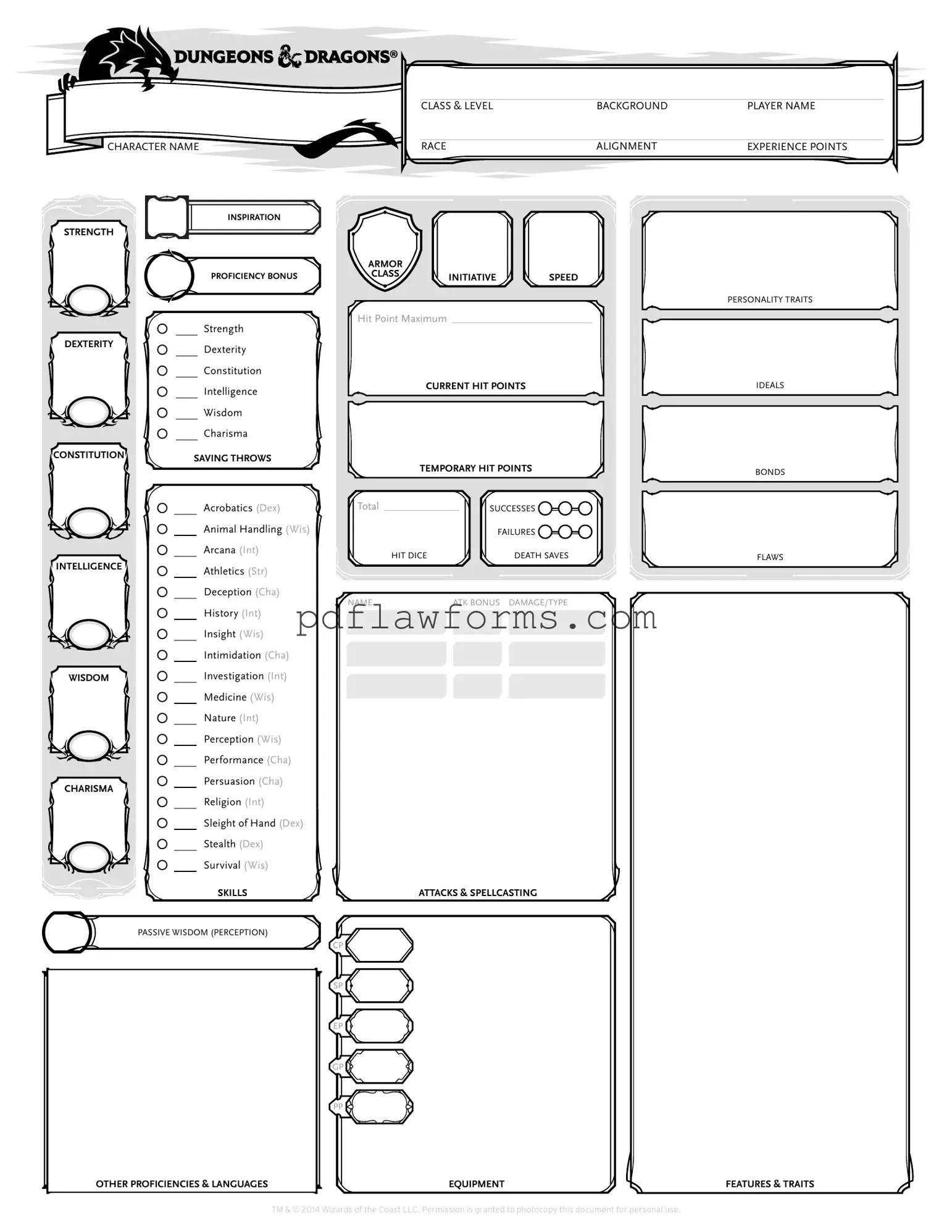The Dungeons & Dragons (D&D) character sheet serves as a vital tool for players embarking on their adventures in the richly woven worlds of this iconic tabletop role-playing game. It encapsulates essential information about a character, including their name, race, class, and background, which together create a foundation for the player's role within the game. The sheet also details a character's abilities, skills, and proficiencies, offering insight into their strengths and weaknesses. Furthermore, it tracks hit points, armor class, and other vital statistics that determine a character's survivability and effectiveness in combat scenarios. Players can record spells, equipment, and inventory, ensuring they are well-prepared for encounters and challenges. The character sheet is not merely a form; it is a living document that evolves as the character grows, reflecting their experiences, achievements, and the choices made throughout the campaign. With its structured layout, the character sheet facilitates quick reference and fosters a deeper connection to the character, enhancing the overall gaming experience.
